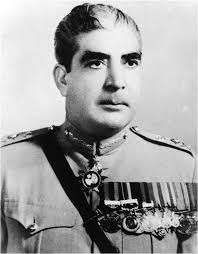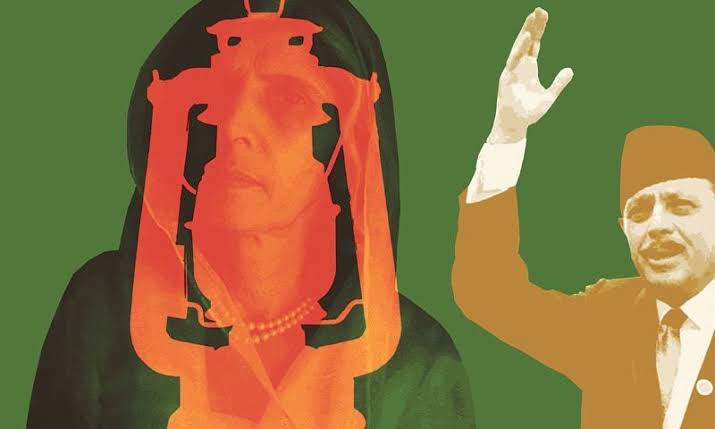“Pakistan’s Political Landscape with General Yahya Khan (1969-1971)”

During his presidency from 1969 to 1971, Pakistan witnessed significant political and social changes. This period marked a crucial transition in the country’s history, with Yahya Khan taking charge after the resignation of President Ayub Khan. It was a time of both challenges and opportunities, as the nation grappled with issues such as the 1970 general elections and the growing demands for regional autonomy. Let’s dive deeper into this fascinating era and explore its impact on Pakistan’s journey.
The era of General Yahya Khan in Pakistan:
1. General Yahya Khan became the President of Pakistan in 1969 after President Ayub Khan stepped down.
In 1969, Pakistan underwent a significant political shift when General Yahya Khan assumed the presidency following the resignation of President Ayub Khan. This transition marked a pivotal moment in the country’s history. Yahya Khan’s presidency was marked by tumultuous events, notably the 1971 Indo-Pakistani war, which led to the secession of East Pakistan, now known as Bangladesh. His tenure was marred by political turmoil and civil unrest, ultimately culminating in the end of military rule in Pakistan. General Yahya Khan’s presidency, though brief, left a lasting impact on the nation’s political landscape, shaping its trajectory for years to come.
2. During his presidency, Pakistan faced various challenges and opportunities.
Throughout General Yahya Khan’s presidency, Pakistan encountered a spectrum of challenges and opportunities that significantly shaped its course. The era was marked by both internal and external pressures, including political unrest, regional tensions, and economic complexities. The conflict with India in 1971 resulted in the separation of East Pakistan, leading to the birth of Bangladesh, a momentous event that redefined the nation’s boundaries. Amidst these challenges, opportunities for socio-political reforms and realignment emerged. Efforts to navigate the aftermath of the war and reconstruct a fractured nation presented avenues for reshaping policies and redefining Pakistan’s role on the global stage. This period, though tumultuous, became a catalyst for introspection and change, setting the groundwork for subsequent transformations in Pakistan’s political landscape.

3. In 1970, general elections were held, which played a significant role in shaping the era.
The 1970 general elections in Pakistan were a watershed moment that significantly influenced the era under General Yahya Khan’s presidency. These elections marked a crucial juncture in the country’s history, as they were the first nationwide polls held in over a decade. The outcome of these elections, notably the victory of the Awami League in East Pakistan and the Pakistan People’s Party in West Pakistan, reflected the diverse political aspirations within the nation. The results accentuated regional disparities and highlighted the pressing need for addressing grievances and disparities between the two wings of the country. The election’s aftermath set the stage for subsequent events, including heightened tensions between East and West Pakistan, eventually leading to the fractious secession and the birth of Bangladesh in 1971. The pivotal role of the 1970 elections in precipitating consequential political shifts underscores its enduring significance in shaping Pakistan’s historical narrative.
4. The elections resulted in the victory of the Awami League in East Pakistan and the Pakistan People’s Party in West Pakistan
The 1970 elections in Pakistan yielded a momentous victory for the Awami League in East Pakistan and the Pakistan People’s Party (PPP) in West Pakistan. This electoral outcome underscored the divergent political aspirations between the country’s eastern and western wings. The Awami League, led by Sheikh Mujibur Rahman, secured a landslide victory in East Pakistan, emphasizing the demand for greater autonomy and rights for the region. Simultaneously, the PPP, headed by Zulfikar Ali Bhutto, emerged triumphant in West Pakistan, advocating for populist and socialist reforms. This electoral divide highlighted regional disparities and deep-seated grievances, setting the stage for heightened tensions between the two wings and ultimately contributing to the fracturing of the nation and the birth of Bangladesh in 1971. The contrasting victories of the Awami League in the east and the PPP in the west were pivotal in shaping the subsequent trajectory of Pakistan’s political landscape.
5. However, the political situation became tense as the government failed to address the demands for regional autonomy.
The aftermath of the 1970 elections in Pakistan intensified political tensions as the government struggled to address the pressing demands for regional autonomy, particularly in East Pakistan. The failure to promptly address these aspirations exacerbated existing grievances and widened the divide between the eastern and western wings of the country. The Awami League’s resounding victory in East Pakistan had amplified calls for greater autonomy and recognition of the region’s distinct cultural and linguistic identity. However, the central government’s inability to effectively negotiate or implement measures to address these demands fueled discontent and disillusionment among the populace in East Pakistan. This escalating tension ultimately culminated in a severe breakdown of political dialogue and, coupled with other socio-political complexities, led to the tragic events that resulted in the separation of East Pakistan, eventually becoming the independent nation of Bangladesh in 1971. The failure to reconcile regional aspirations and bridge the growing divide significantly contributed to the fracturing of Pakistan and remains a pivotal chapter in its history.
6. In March 1971, the political crisis escalated, leading to the declaration of independence by Bangladesh (formerly East Pakistan).
In March 1971, the political crisis in Pakistan reached a critical juncture, precipitating the declaration of independence by Bangladesh, previously known as East Pakistan. The escalating tensions between the eastern and western wings of the country, exacerbated by the failure to address demands for regional autonomy and recognition, culminated in a historic moment. On March 26, 1971, Sheikh Mujibur Rahman, the leader of the Awami League and the elected representative from East Pakistan, declared the independence of Bangladesh. This declaration marked a definitive rupture in Pakistan’s unity, leading to a protracted and devastating conflict between the Pakistani military and Bengali nationalists seeking self-determination. The declaration of independence by Bangladesh marked the beginning of a tumultuous period in the region’s history, ultimately resulting in the creation of a new sovereign nation.
7. This marked a turning point in the era, as Pakistan faced a military conflict and a humanitarian crisis.
The declaration of independence by Bangladesh in 1971 marked a pivotal turning point in the era, thrusting Pakistan into a harrowing military conflict and a profound humanitarian crisis. The subsequent armed conflict between the Pakistani military and Bengali nationalists seeking autonomy led to widespread violence, displacement, and immense suffering. The brutalities unleashed during this period resulted in a catastrophic humanitarian crisis, with countless lives lost and millions displaced. The military conflict and humanitarian plight significantly altered the socio-political landscape, not just within the region but also on the international stage, drawing global attention to the dire situation unfolding in what was once East Pakistan. This critical juncture not only reshaped the course of Pakistani history but also left an indelible mark on the collective memory of the subcontinent.
8. Eventually, General Yahya Khan’s presidency ended in 1971, and he handed over power to the civilian government.
General Yahya Khan’s presidency culminated in the aftermath of the tumultuous events of 1971, marked by the separation of East Pakistan and the birth of Bangladesh. Under mounting pressure amidst the military conflict and humanitarian crisis, Yahya Khan relinquished power, signaling the end of his presidency. In a significant transition, he handed over authority to a civilian government, paving the way for a shift from military rule to civilian governance. This transfer of power marked a critical moment in Pakistan’s history, signifying a departure from a period marred by political turmoil and military intervention. The transition to civilian rule after Yahya Khan’s presidency aimed to restore stability, foster democratic processes, and initiate the arduous task of rebuilding a fractured nation in the aftermath of the devastating events of 1971.
. In my point of view:
The era of General Yahya Khan’s presidency in Pakistan, particularly the period surrounding the 1970 elections and the subsequent events leading to the separation of East Pakistan, remains a defining chapter in the nation’s history. The political upheaval, tensions, and eventual fracturing of the country into Bangladesh marked a tragic and transformative phase. The failure to address regional grievances and the escalation of conflicts resulted in a devastating humanitarian crisis. This period underscores the complexities of governance, the significance of addressing diverse regional aspirations, and the repercussions of political miscalculations. It’s a poignant reminder of the importance of inclusive governance, respect for regional diversity, and the dire consequences of neglecting the voices of marginalized populations. Ultimately, it serves as a crucial lesson in the pursuit of unity, stability, and the imperative of responsive and inclusive governance for a nation’s sustained progress and harmony.

MCQ’s:
- Who became the President of Pakistan after Ayub Khan?
a) General Yahya Khan
b) Zulfikar Ali Bhutto
c) Liaquat Ali Khan
d) Pervez Musharraf - When did General Yahya Khan assume the presidency of Pakistan?
a) 1965
b) 1969
c) 1971
d) 1975 - What significant event occurred during the 1970 general elections in Pakistan?
a) The victory of the Awami League in East Pakistan
b) The victory of the Pakistan People’s Party in West Pakistan
c) The declaration of independence by Bangladesh
d) All of the above - Which region of Pakistan declared independence in 1971?
a) East Pakistan
b) West Pakistan
c) Balochistan
d) Sindh - How did General Yahya Khan’s presidency come to an end?
a) He was impeached by the Parliament
b) He was overthrown in a military coup
c) He voluntarily resigned
d) He completed his term and retired - Alright, Ayosha! Here are some more MCQs related to the topics you mentioned:
- What was one of the reasons for the failure of General Ayub Khan’s regime?
a) Economic instability
b) Political corruption
c) Military intervention
d) Lack of public support - How were the President and Prime Minister chosen during General Ayub Khan’s era?
a) Direct elections
b) Indirect elections
c) Appointment by the military
d) Selection by the judiciary - What was the outcome of Fatima Jinnah’s defeat in the presidential election against Ayub Khan?
a) Increased support for Ayub Khan’s regime
b) Rise of opposition parties
c) Strengthening of democratic institutions
d) Formation of a coalition government - The Tashkent Treaty, signed in 1966, aimed to resolve a conflict between which two countries?
a) Pakistan and India
b) Pakistan and Afghanistan
c) Pakistan and China
d) Pakistan and Bangladesh - Which event in the late 1960s saw widespread student protests against General Ayub Khan’s regime?
a) Lahore Resolution
b) Karachi Agreement
c) Rawalpindi Conspiracy
d) Agartala Conspiracy.
Post Comment